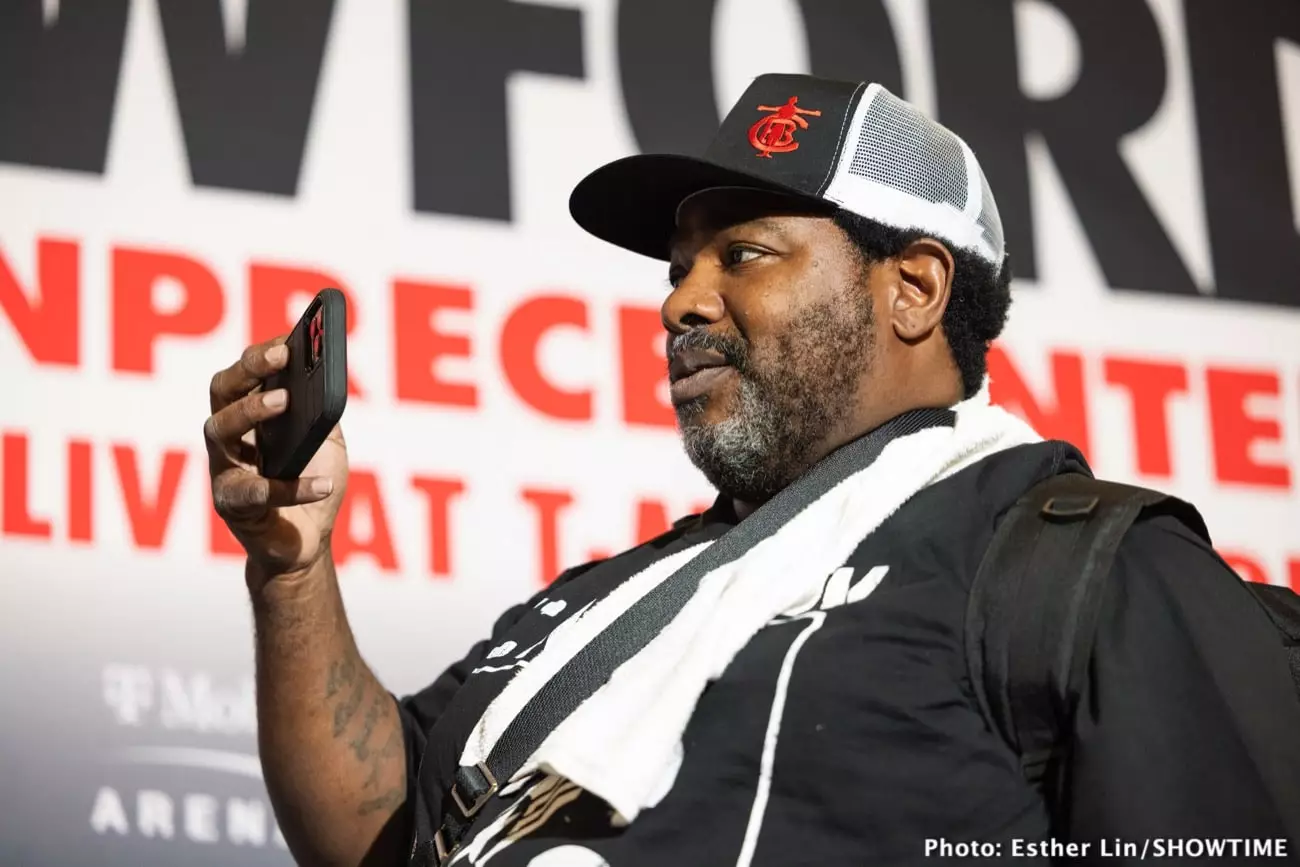Few narratives are as captivating as that of Terence Crawford and his impending showdown with Canelo Alvarez. As Crawford prepares to ascend two weight classes, he is not just stepping into the ring; he is diving headfirst into a commercial spectacle. Brian ‘BoMac’ McIntyre, Crawford’s trainer, claims that this fight transcends financial incentives, asserting that the motivation lies in legacy and greatness. However, this claim opens the door to vital scrutiny—are we witnessing a pure pursuit of glory or a calculated financial maneuver masquerading as noble ambition?
Crawford’s Strategic Move: More Than Just Intentions
It’s all too common in the fight game for trainers and promoters to project an image of altruism when significant sums of money are at stake. While McIntyre states that Crawford is not in it for the money, one must question the integrity of such assertions. Cynicism aside, few can deny that a significant payday comes on the heels of this high-stakes confrontation. Part of Crawford’s decision to leap to 168 pounds surely lies in the financial rewards offered by Canelo, a perennial powerhouse in boxing whose bouts generate substantial income.
Crawford has navigated his career with astounding skill, yet he now risks stepping into unfamiliar territory. Despite a storied record of 41-0 with 31 knockouts, representations of legacy-building cannot ignore the logistical and physical challenges of engaging in a weight class where he has no prior experience. How will a fighter accustomed to 147-pound bouts adjust to the sheer power and might present in the super middleweight division? For Crawford, this isn’t just about challenging a legend; it’s about banking on a potential future, both in terms of reputation and finances.
The Legacy Argument: Authenticity or Artifice?
McIntyre makes a compelling case for Crawford wanting to solidify his legacy by defeating Alvarez, yet the argument quickly loses its luster under the scrutiny of logical examination. Should Crawford truly seek to prove himself against the best, wouldn’t it be more prudent to engage with the formidable contenders already established in the 168-pound division? Instead, he is choosing an immediate showdown with one of the most successful boxers in history, a decision that invites skepticism regarding his true intentions.
Fans and analysts alike have voiced skepticism. Why skip the customary rite of passage within a new weight class? Engaging with even a mid-tier contender would serve not only as a platform to adapt to the new weight but also signal a serious commitment to validate his legacy as opposed to capitalizing on a single lucrative opportunity. This decision inevitably conjures the image of a fighter who might be hedging his bets rather than delving into a wholehearted pursuit of greatness.
Crawford’s Last Performance: Telltale Signs or Psychological Warfare?
The analysis of Crawford’s last encounter, a controversial bout against Israil Madrimov at junior middleweight, reveals cracks in the armor of his strategy. Many fans perceived this contest as indicative of Crawford’s ability to smoothly transition into higher weight classes, yet the fight ended up more contentious than conclusive. It showcased not just the physical challenges but also highlighted a critical moment of vulnerability in Crawford’s career.
If Crawford is indeed attempting to display his dominance and effectively rebut critics, one must wonder whether the pressure to perform at an elite level weighs heavily on his psyche. Will this pressure exacerbate his performance, or can he convert it into a catalyst for success? The narrative surrounding this upcoming clash could serve as a litmus test for Crawford’s fortitude, both emotionally and physically, as he faces an opponent renowned for his relentless tenacity.
The Financial Underpinnings: A Necessary Evil
The financial allure of this fight cannot be understated, nor should it be dismissed outright. This matchup represents an apex of monetary opportunity for Crawford, where the lofty purse could provide a cushion even if the bout does not go as planned. Is it fair to label Crawford a mercenary for seizing an advantageous financial opportunity? Perhaps not, but it remains an undeniable backdrop to this clash of giants.
In an era where the success of a fighter is often measured in dollar signs as much as in titles, Crawford stands on the precipice of redefining his legacy—or at least reshaping its financial architecture. While he may wish to be remembered as one of the greats, it’s essential to acknowledge that in the boxing world, the financial and the glorious often intertwine.
As spectators gear up for what will undoubtedly be a historical battle, the anticipation largely hinges not only on the prowess of these fighters but also on the surrounding narrative of ambition, legacy, and financial freedom, challenging us to rethink what it truly means to be “great” in the boxing ring.


Leave a Reply